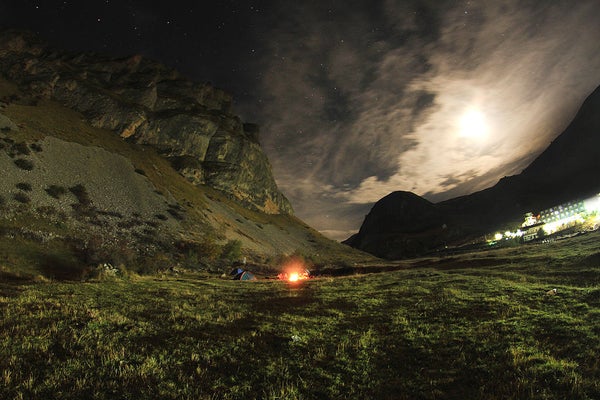This article was published in Scientific American’s former blog network and reflects the views of the author, not necessarily those of Scientific American
In recent weeks the media hype around the impending solar eclipse has risen, and one narrative that’s gaining traction is one of an impending Armageddon. All the hotels are sold out, you’ll hear, and there will be chaos on the roads as millions of people take last-minute trips to unprepared small towns along the path of totality.
Faced with nowhere to stay and potential gridlock, people are now making terrible decisions. “I want to keep off the road and I'm happy with seeing a 90 percent eclipse (or a 60 or a 40) from my backyard,” is a becoming a common refrain. To anyone who's experienced totality before, nothing sounds more ludicrous. A partial eclipse? I don’t want to break America’s bubble, but it’s dull to anyone but an astronomy geek. Most of America will see a partial eclipse on August 21, which means almost everyone will wonder what all the fuss is about.
But those close to the path of totality have won the celestial equivalent of Super Bowl tickets. So why are they planning to stand outside the stadium? If you’re among them, you should ignore the warnings and go see the total solar eclipse anyway. This event is rare, and so special—and there’s no excuse to miss it if you make peace with one simple concept: camping.
On supporting science journalism
If you're enjoying this article, consider supporting our award-winning journalism by subscribing. By purchasing a subscription you are helping to ensure the future of impactful stories about the discoveries and ideas shaping our world today.
If you can convince yourself to spend a night or two under nylon or you have access to an RV, this eclipse is yours for the taking. Seriously, eclipse chasing doesn’t get any easier that this. There are hundreds of places to camp or park an RV for this event, as I've discovered in compiling my USA Eclipse 2017 Camping & RV Guide. All you need to do is pick a place and get there a day or two before Monday, August 21 (and leave the day after) and you’re set.
Getting to that narrow strip of land is everything, because when it comes, totality is breathtaking. As the moon blocks the sun's disk, its outer atmosphere, the corona, instantly appears in the sudden darkness. The eclipse glasses come off. The corona looks ice-white, it’s textured, it pulses. You can often see huge red explosions of plasma on the surface of the sun. You get to see the true nature of a star. It’s mesmerizing.
And it’s going to be visible in a path that stretches 3,000 miles, from where the moon's shadow makes landfall in Oregon to where it leaves the U.S. in South Carolina. Because the path of totality averages 68 miles wide, that's 204,000 square miles! And those square miles contain hundreds of places to camp far from major cities and potentially busy Interstates.
One option is an eclipse festival, some of which have music. There's the Moonshadow Festival on a ranch in Prineville, Ore., SolarFest Among the Wildflowers on a farm 30 miles north of Nashville, Tenn., and Moonstock 2017 at Walker’s Bluff Vineyard near Carterville, Ill., (complete with Ozzy Osbourne singing “Bark at the Moon” during totality).
Bookable campsites in national and state parks are largely sold-out, although some are first-come-first-serve, so your best bet is a private campsite. Many huge ranches in Oregon, Wyoming, Idaho and Nebraska in particular are opening their fields, and will almost certainly not be full. A good example of that is where I'm camping for $25—the Jim Moss Arena Eclipse 2017, 15 miles northwest of Riverton, Wyo. As well as Native American tipis, this vast ranch has potable water, restrooms, a barrel race or two, a campfire get together on the Sunday…and a mere 8 percent chance of cloud cover. I’ve found dozens of such places; private ranches and farms offering vast fields to camp in is a almost daily occurrence on Facebook.
If you have an RV, you can park it almost anywhere overnight; parking an RV and dispersed camping is legal in some National Forests, National Parks and National Recreation Areas. It's also legal on U.S. Bureau of Land Management (BLM) locations. Just be very careful not to start wildfires—this is August.
A total solar eclipse almost never crosses a country as big or as accessible as the U.S. And according to my research, anyone who says the eclipse is either best avoided or “sold out” is telling you two things: They don’t understand the word “total” in total solar eclipse, and they hate camping.
